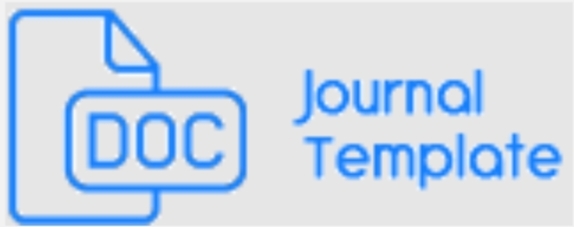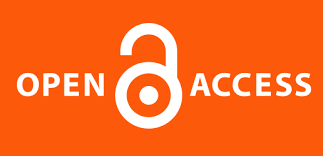Urgensi Dan Prinsip Penerapan Pendekatan Manajemen Sumber Daya Manusia Strategis Pada Institusi Pendidikan
Abstract
To survive and thrive, educational institutions need the direction of human resources management has focused on the achievement of the long-term goals, by applying the strategic human resource management approach. This article aims to discuss the implementation of the fundamental to the human resource management (HRM) approach in educational institutions, include: the basic concepts of strategic human resource management; principles and urgency of its application in educational institutions. Through the study of literature, the results of the study show that to cope with the challenge of managing educational that an increasingly complex, it needs human resource management that not only run management functions, but also leads to the strategy to achieve the long term goals of institutions. This approach is known as the strategic human resource management. This approach became particularly urgent to implement in the educational institutions on three needs; (1) Managing human as the most important resources in the achievement of the main objectives of education; (2) Keep the accountability of institutions in the public eye; and (3) Making human resources as a competitive advantage for the institution. Its application at educational institutions require a series of principles include: understanding of the institutional environment; understanding of the development of the world of work; focus on long term goals of the institution; attention to the development of institutional personnel; and integrating human resources strategy with the strategy of the institution.
References
Amstrong, Michael. (2008). Strategic Human Resouces Management: A Guide to Action, 4th Ed. London and Philadelphia: Kogan Page.
Baharuddin dan Moh. Makin. (2010). Manajemen Pendidikan Islam: Transformasi Menuju Sekolah/ Madrasah Unggul. Malang: UIN-Maliki Press.
Brown, Philip. (2015). "Intertwining School Culture and Hidden Curriculum: A Positive Influence on Young Adolescents." North Carolina Association for Middle Level Education Journal. Fall 29.1, pp. 4-8.
Daryanto. (1997). Kamus Bahasa Indonesia Lengkap. Surabaya: Apollo.
Dave Ulrich. (1997). Human Resource Champions: The Next Agenda for Adding Value and Delivering Results. Harvard Business School Press.
DeCenzo, David A. & Stephen P. Robbins. (1999). Human Resources Management. John Wiley and Sons.
Evans, Ian G. (1995). Marketing for School. New York: Cassel.
Filip, A. (2012). A global analysis of the educational market environment. Procedia-Social and Behavioral Sciences, 46, 1552-1556.
Ivancevich, John M. (2007). Human Resources Management, Vol. 10. New York: McGraw-Hill Education.
Mahdi, O. R., & Almsafir, M. K. (2014). The role of strategic leadership in building sustainable competitive advantage in the academic environment. Procedia-Social and Behavioral Sciences, 129
Mangkuprawira, Sjafri. (2004). Manajemen Sumber Daya Manusia Strategik. Jakarta: Ghalia Indonesia.
Muhaimin dkk., (2010). Manajemen Pendidikan: Aplikasinya dalam Penyusunan Rencana Pengembangan Sekolah/Madrasah. Jakarta: Kencana.
Nakpodia, E. D. (2010). “Human Resource Management in School Administration in Delta State Nigeriaâ€, J Soc Sci, Vol. 23, No. 3.
Nasukah, B. (2017). Analisis Lingkungan Lembaga Pendidikan Islam. Tarbiyatuna: Jurnal Pendidikan Ilmiah, 2(1).
Nasukah, B. (2017). Budaya Sekolah Sebagai Hidden Curriculum Pembentuk Karakter Lulusan Lembaga Pendidikan Islam. DINAMIKA, 2(1).
Nawawi, Hadari. (2005). Manajemen Strategik Organisasi Non Profit Bidang Pemerintahan. Yogyakarta: Gajah Mada University Press.
Notoatmodjo, Soekidjo. (2003). Pengembangan Sumber Daya Manusia. Jakarta: Rineka Cipta.
Osagie, Roseline O. & Chukujindu J. Okafor. (2012). “Relationship Between Human Resources Management Variables And Students’ Academic Performance In Secondary Schools In Egor Local Government Area, Edo State, Nigeriaâ€, European Journal of Educational Studies 4,(1),
Pearce, John A. dan Richard B. Robinson Jr . (2008). Manajemen Strategis : Formulasi, Implementasi dan Pengendalian. Alih Bahasa: Yanivi Bachtiar dan Christine. Jakarta: Salemba Empat.
Pidarta, Made. (1998). Peranan Kepala Sekolah pada Pendidikan Dasar. Jakarta: PT Gramedia Mediasarana Indonesia.
Qomar, Mujamil. (2007). Manajemen Pendidikan Islam: Strategi Baru Pengelolaan Lembaga Pendidikan Islam. Penerbit Erlangga.
Sergiovanni, Thomas J., et al. (1987). Educational governance and administration. Pearson College Div.
Sunarto. (2007)Manajemen (1). Yogyakarta: Amus.
Susanto, A. B. (2011). Management For Everyone 5: Human Capital. Jakarta: Erlangga.
Wahyudi, Agustinus Sri. (1996). Manajemen Strategik: Pengantar Proses Berpikir Strategik. Jakarta: Binarupa Aksara.
Werther, W. B. & Keith Davis. (1993). Human Resources and Personnel Management. New York: McGraw-Hill.








.png)

